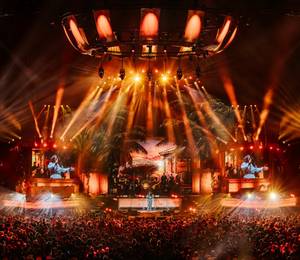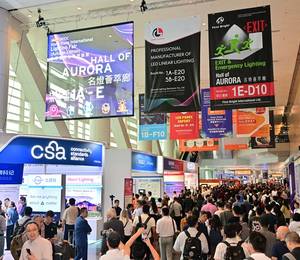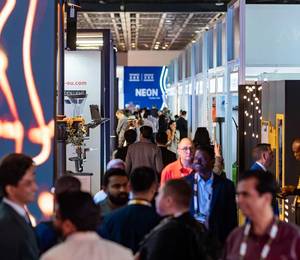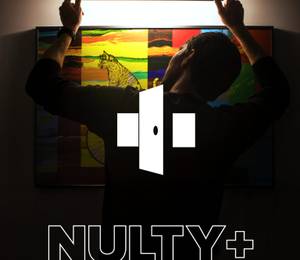The International Year of Light and Light-based Technologies (IYL 2015) was officially opened in Germany at the Deutsches Museum in Munich on 27 February. The Ceremony was attended by around 300 high-ranking guests from business, research and culture that paid tribute to light as the basis of life and a catalyst for science and technology.
We would not exist without light. The sun has given it to us for billions of years. At the same time, light – or more generally: electromagnetic radiation – is the basis of many important branches of science or technologies: laser, solar cells, LEDs and fibre optics are just a few examples. Reason enough to take a much closer look at the importance of light. That is why the UN General Assembly proclaimed 2015 the “International Year of Light and Light-based Technologies”.
In Germany events are being co-ordinated by the Deutsche Physikalische Gesellschaft (DPG) in conjunction with the German UNESCO Commission. So several weeks ago the DPG already launched a nationwide events calendar on the website www.jahr-des-lichts.de, where event organisers can enter their planned festivals, celebrations or conferences – regardless of whether they are scientific, technological, application-specific, cultural or artistic.
“The DPG deliberately chose this date because it coincides with the inauguration of an important optical instrument: the Zeiss Planetarium. We aim to use the Year of Light to get young people and the general public interested in new technologies and to show many examples of a successful and rapid transfer of technology from research to application.” Edward G. Krubasik, President of the DPG.
The well-known German TV presenter and astrophysicist Harald Lesch conducted the opening ceremony with aplomb. Welcoming addresses were given by the nano-researcher and General Director of the Deutsches Museum Wolfgang M. Heckl, UNESCO representative Maciej Nalecz, and Andreas Tünnermann, Head of the Fraunhofer Institute for Applied Optics and Precision Engineering (IOF) on behalf of all the co-organisers, which also included the Helmholtz-Gemeinschaft, the Gottfried Wilhelm Leibniz Association and the Max Planck Society.
The scientific side of light was illuminated by the recent Nobel Prize for Chemistry winner Stefan Hell from the Max Planck Institute for Biophysical Chemistry, Goettingen, Germany, in his presentation on the “STED microscope”, for which he was distinguished with the Nobel Prize, and Martin Roth from the Leibniz Institute for Astrophysics Potsdam (AIP), who took the guests on an mental journey from molecules to galaxies and back. The political view was expressed by Parliamentary Secretary of State Stefan Müller; the view of industry by Olaf Berlien, Chairman of the Board of Osram Licht AG. With a light installation visible from far off the company is lighting the Deutsches Museum up in a totally new light for several days. “Wherever there is a lot of light there is also a lot of shade”, said church councillor Stephan Schleissing from the Ludwig Maximilian University of Munich’s Institut Technik-Theologie-Naturwissenshaften, giving food for thought in his presentation on light and enlightenment in Christendom.
A special highlight of the ceremony was the reopening of the Zeiss Planetarium. The first projection planetarium ever was already in the Deutsches Museum in 1923. It was commissioned by Oskar von Miller, the founder of the Deutsches Museum from Carl Zeiss in Jena. Since then the Deutsches Museum has had up to 80,000 visitors a year.
For Michael Kaschke, Chairman of the Board of the Carl Zeiss AG group, and member of the DPG Executive Board responsible for Industry, creating the most modern planetarium in the world was of particular importance. His aim is to convey to as many people as possible how fascinating the advances in the micro-world and macro-world can be, and what significance light has for life on Earth. Kascke says:
“Experiencing for oneself, moments of astonishment and emotion, as made possible by the new planetarium on virtual journeys through the universe and our world, trigger the desire to understand things and also engage with physics and optics.
He is fascinated by the thought that the photons of light of stars or galaxies often travel billions of years in the universe to finally end up triggering off on the retina of an observer a bioelectrical impulse that goes directly to the brain to trigger off curiosity, fascination or a gain in knowledge. At the end of the event he used the French term “voir est savoir” (which translates roughly as “to see is to know”) to reiterate the importance of light for science and technology as well as for life – at least on earth.
About Deutsche Physikalische Gesellschaft
The Deutsche Physikalische Gesellschaft e.V. (DPG), which dates back to 1845, is the oldest national society, and with more than 63,000 members also the largest physical society, in the world. As a non-profit association it pursues no economic interests. Through conferences, events and publications it promotes the transfer of knowledge within the scientific community and aims to open a window to physics for anyone curious. Its particular focuses are on encouraging the next generation of natural scientists and championing equal opportunities. The DPG’s head office is in Bad Honnef on the Rhine. Its representative office in the capital is the Magnus-Haus Berlin.
Website: www.dpg-physik.de
About IYL 2015
The International Year of Light and Light-Based Technologies (IYL 2015) is a global initiative adopted by the United Nations (A/RES/68/221) to raise awareness of how optical technologies promote sustainable development and provide solutions to worldwide challenges in energy, education, agriculture, communications and health. With UNESCO as lead agency, IYL 2015 programs will promote improved public and political understanding of the central role of light in the modern world while also celebrating noteworthy anniversaries in 2015—from the first studies of optics 1,000 years ago to discoveries in optical communications that power the Internet today. The IYL Global Secretariat is located at the Abdus Salam International Centre of Theoretical Physics (ICTP).
The Founding Partners of IYL 2015 are the American Institute of Physics (AIP), the American Physical Society (APS), the Deutsche Physikalische Gesellschaft (DPG), the European Physical Society (EPS), the Abdus Salam International Centre of Theoretical Physics (ICTP), the IEEE Photonics Society (IPS), the Institute of Physics (IOP), Light: Science and Applications, the lightsources.org International Network, 1001 Inventions, The Optical Society (OSA) and the International Society for Optics and Photonics (SPIE).
Patron Sponsors include Bosca, the International Association of Lighting Designers (IALD), Royal Philips Lighting, Thorlabs and UL.
Photo Credits: DPG












